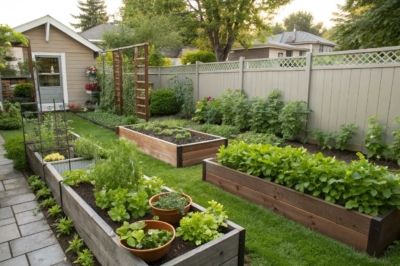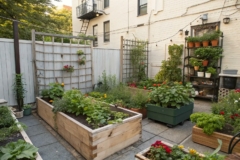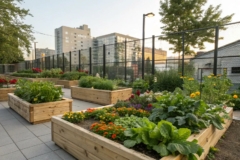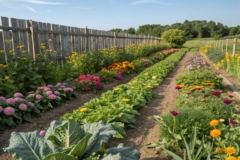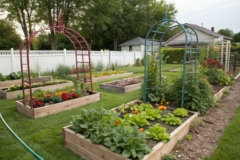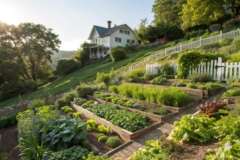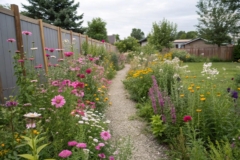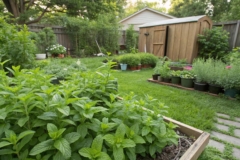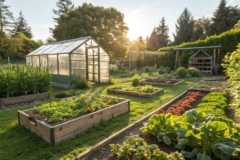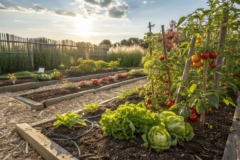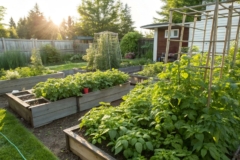1. Design Functional Pathways
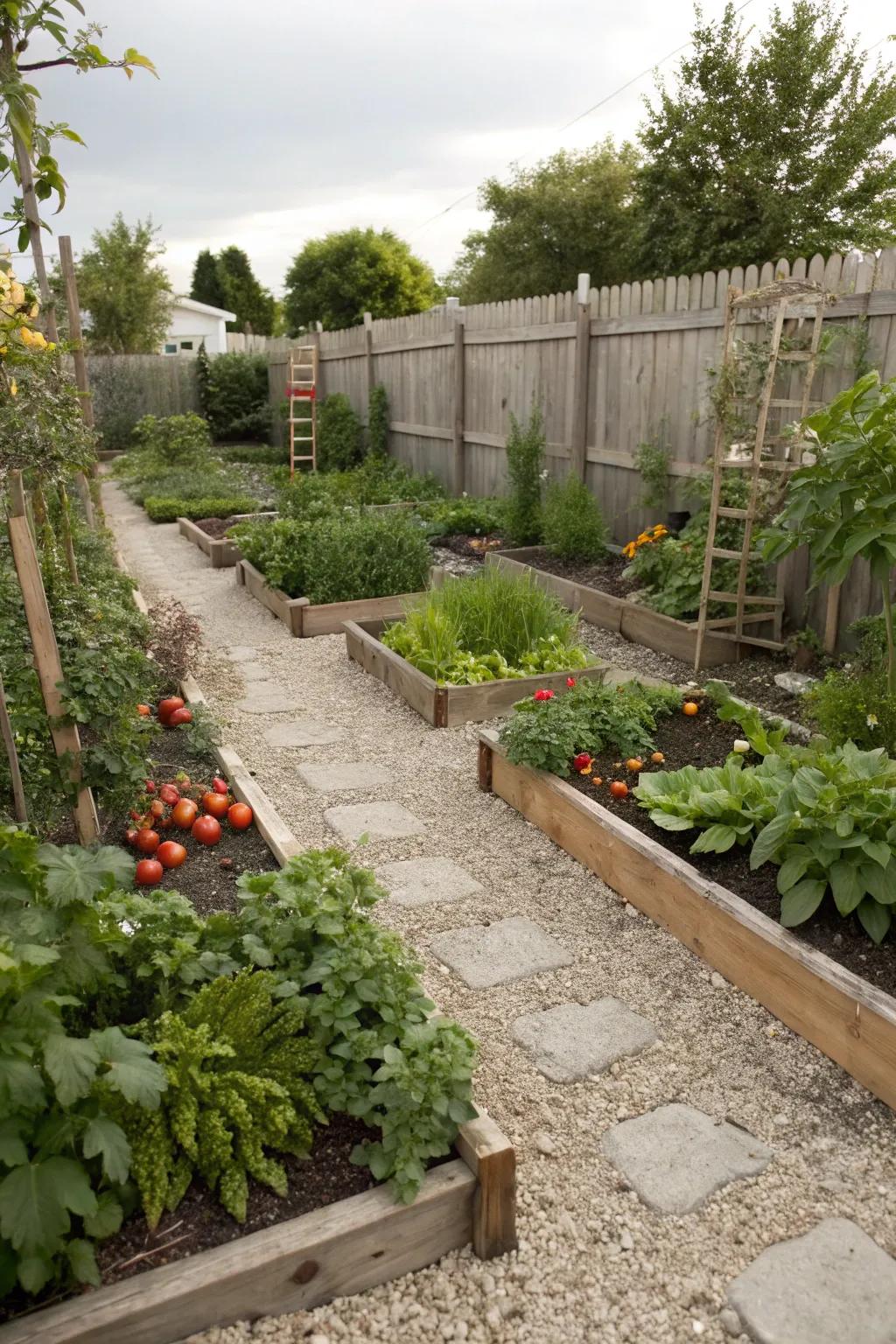
Include gravel or mulched pathways for easy access and maintenance. In my garden, these paths not only keep my shoes clean but also add a charming rustic touch.
A few suggestions:
- Gravel for Garden Pathways: Enhance your garden’s look with easy-to-lay gravel, perfect for clean and charming pathways.
- Garden Pathway Stepping Stones: Lay stepping stones effortlessly to create beautiful, durable paths in your backyard garden.
- Natural Wood Mulch: Use natural wood mulch to define paths while enriching your garden soil with organic material.
2. Try Companion Planting
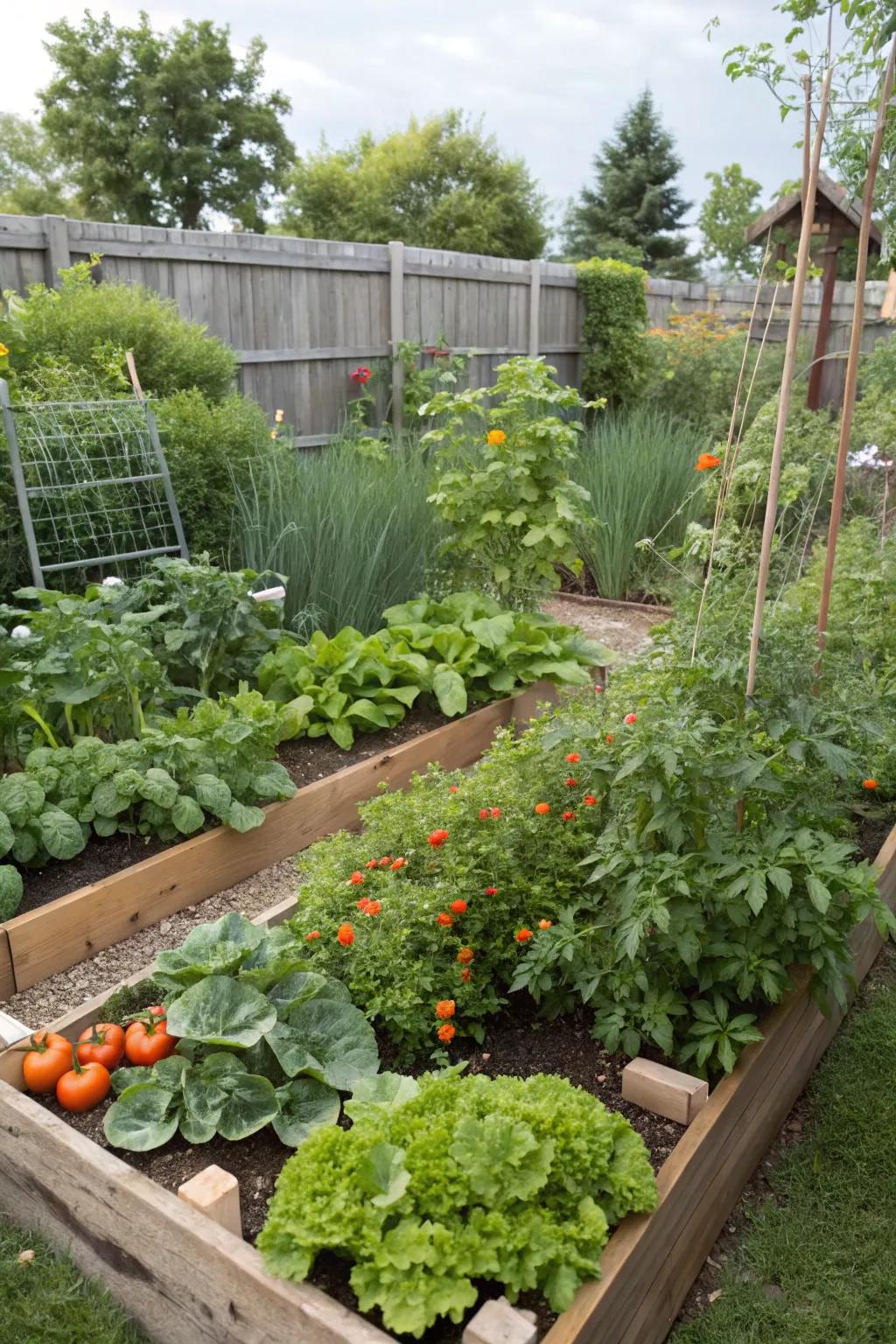
Pairing plants like tomatoes with basil can boost growth and deter pests naturally. I’ve found this method not only effective but also a great way to mix up plant varieties.
Some ideas to consider:
- Raised Garden Bed Kit: Elevate your gardening game with a raised bed kit, making management easy in small spaces.
- Organic Vegetable Seed Collection: Start your companion planting with a diverse organic seed collection for fresh veggies all season.
- Garden Trellis Kit: Support your climbing plants with a sturdy trellis, optimizing vertical space and growth potential.
3. Create a Pizza Garden
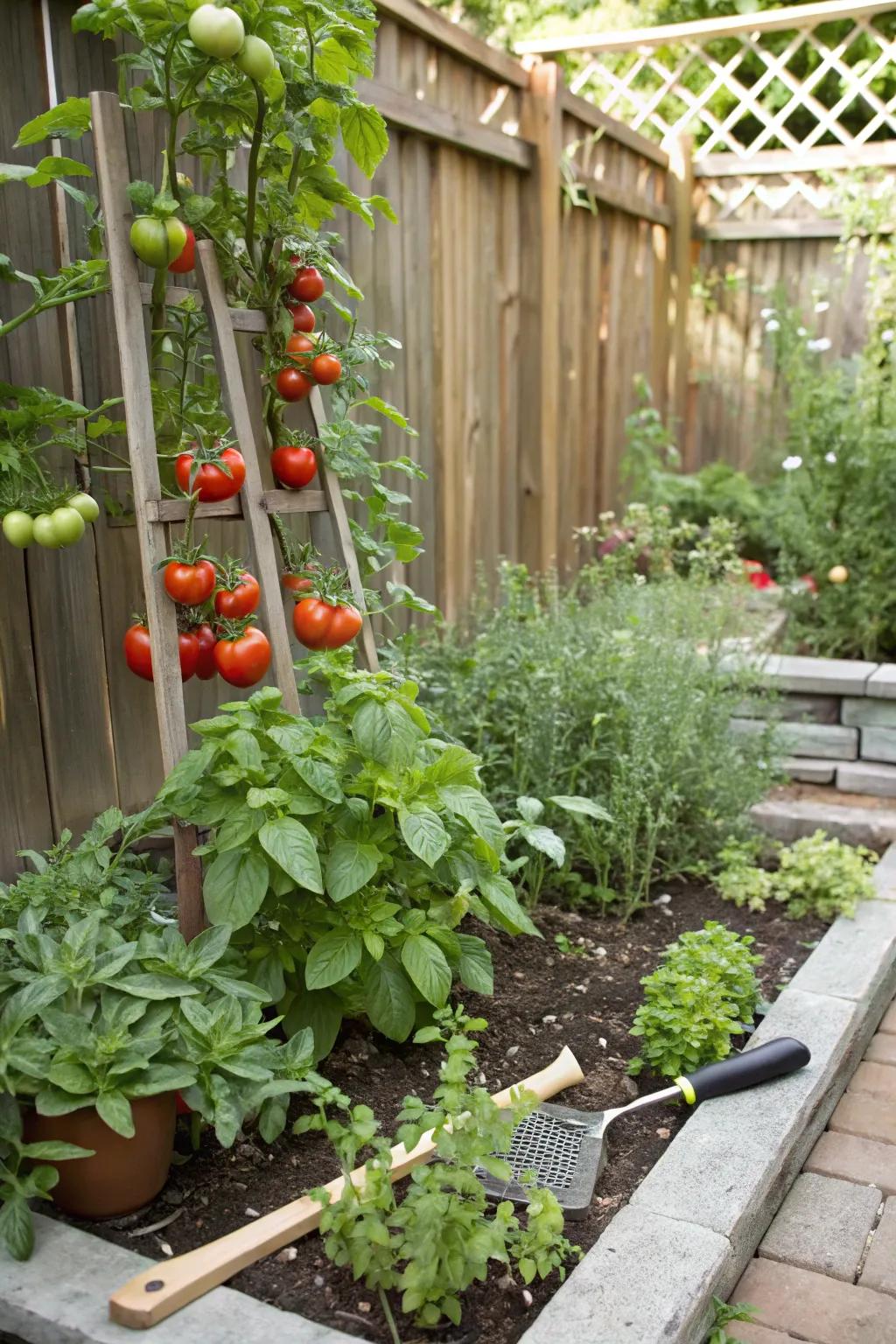
Grow pizza-friendly ingredients like tomatoes, basil, and oregano. There’s nothing quite like a homemade pizza with fresh-picked toppings from my garden.
Maybe worth checking out:
- Tomato Trellis: Support tomato growth with a sturdy trellis for lush, bountiful harvests in your garden.
- Organic Herb Seed Kit: Plant essential pizza herbs like basil and oregano with this convenient organic seed kit.
- Garden Hand Tool Set: Equip yourself with essential tools to maintain your vibrant and productive pizza garden.
4. Explore Elevated Beds
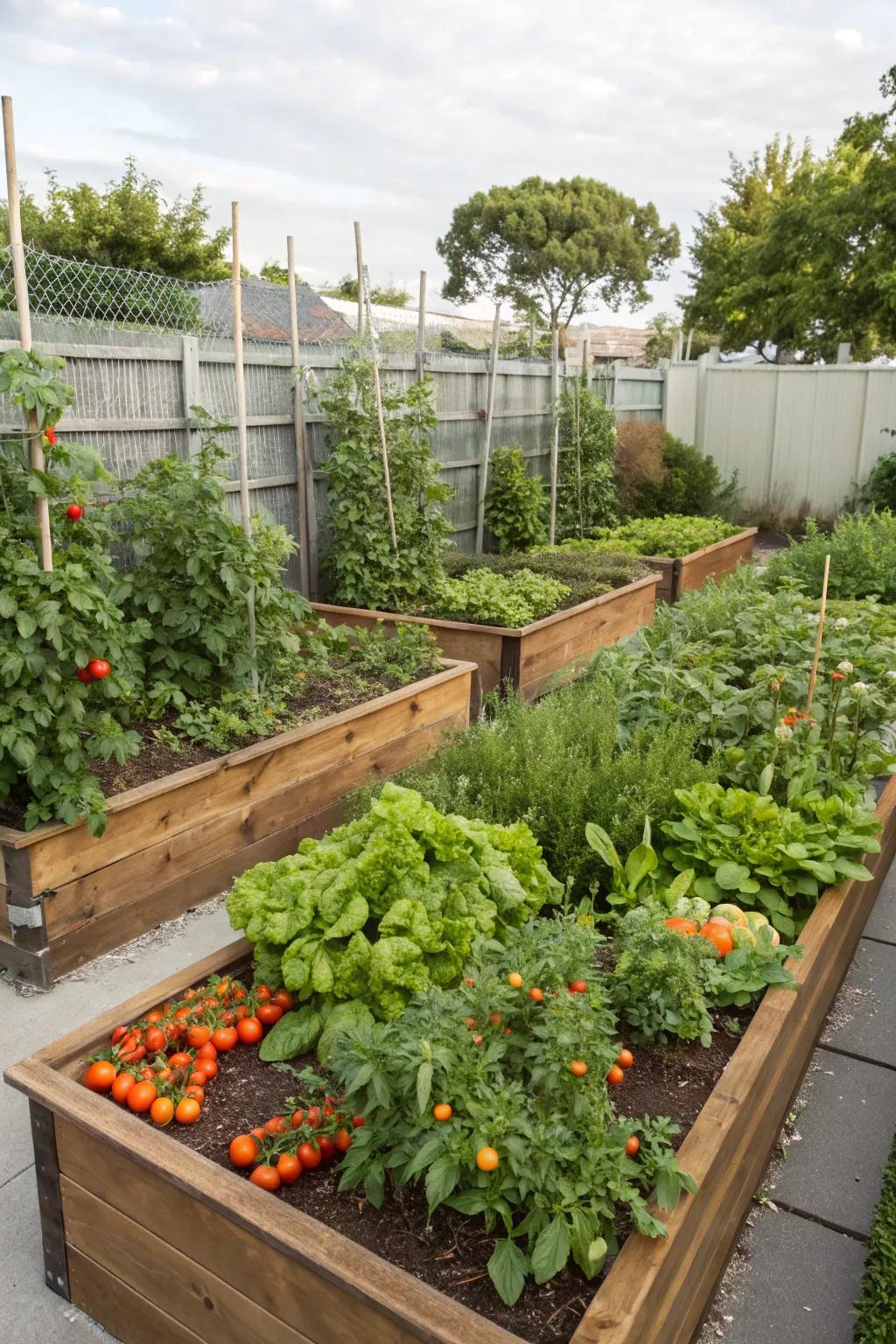
Elevated beds offer easy access and prevent bending. In my garden, they have been invaluable for comfort and accessibility.
Give these a look:
- Wooden Raised Garden Bed: Transform your garden with a wooden raised bed for easy access and optimal plant growth.
- Galvanized Metal Elevated Planter: Enhance durability with a galvanized metal planter for sturdy and lasting vegetable gardening.
- Modular Raised Bed Kit: Customize your garden layout effortlessly with a modular raised bed kit for flexible plant arrangement.
5. Utilize Garden Accessories
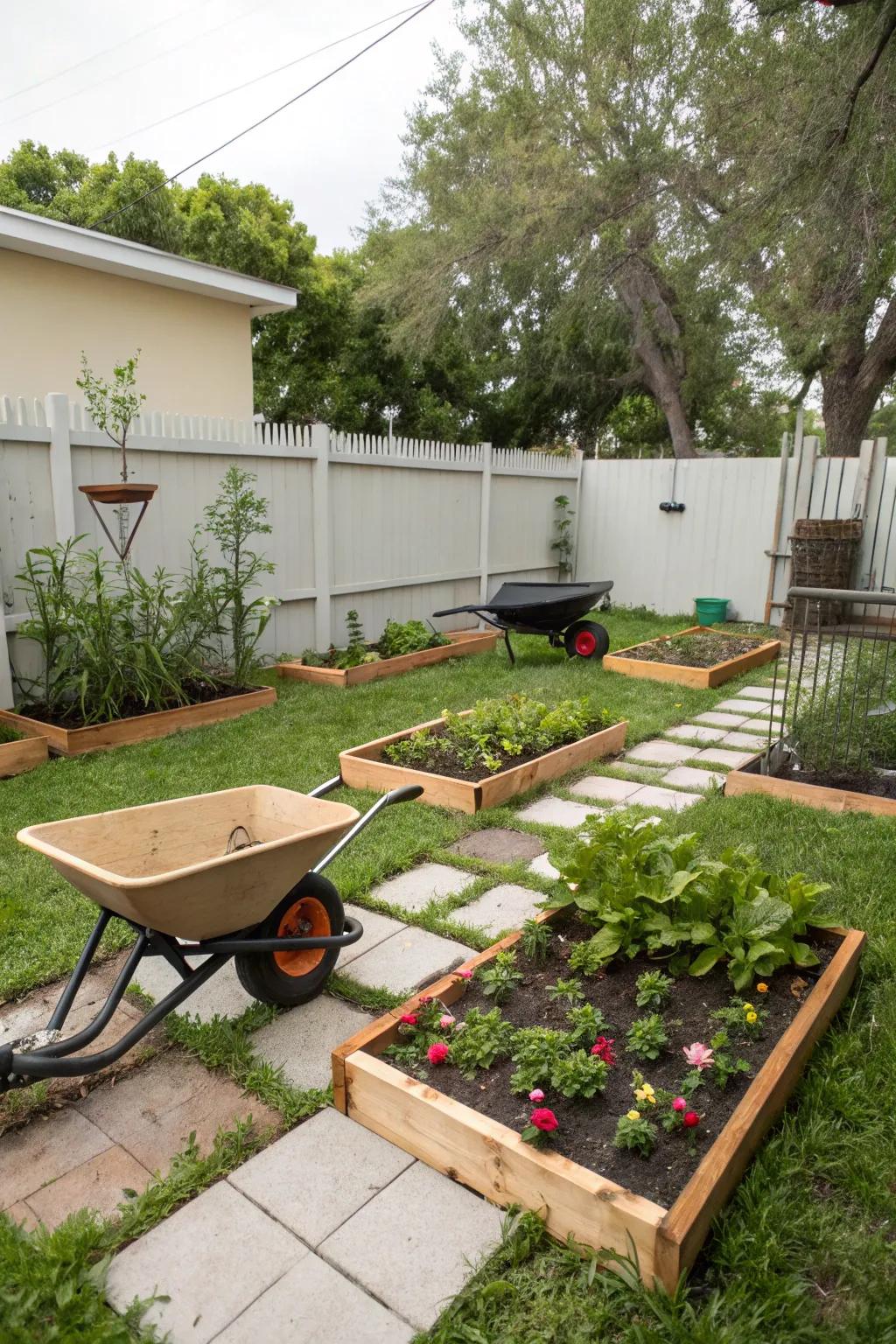
Employ tools like wheelbarrows and raised platforms to keep things organized. These have been lifesavers in my garden, making planting and harvesting a breeze.
Might be a good match:
- Garden Wheelbarrow: Streamline your gardening tasks effortlessly with a reliable wheelbarrow for easy transportation of tools and soil.
- Raised Garden Bed Kits: Enhance your gardening experience with raised beds, ideal for better soil drainage and easy access.
- Garden Tool Organizer: Keep your garden neat and tools within reach with a versatile garden tool organizer.
6. Build a Gutter Garden
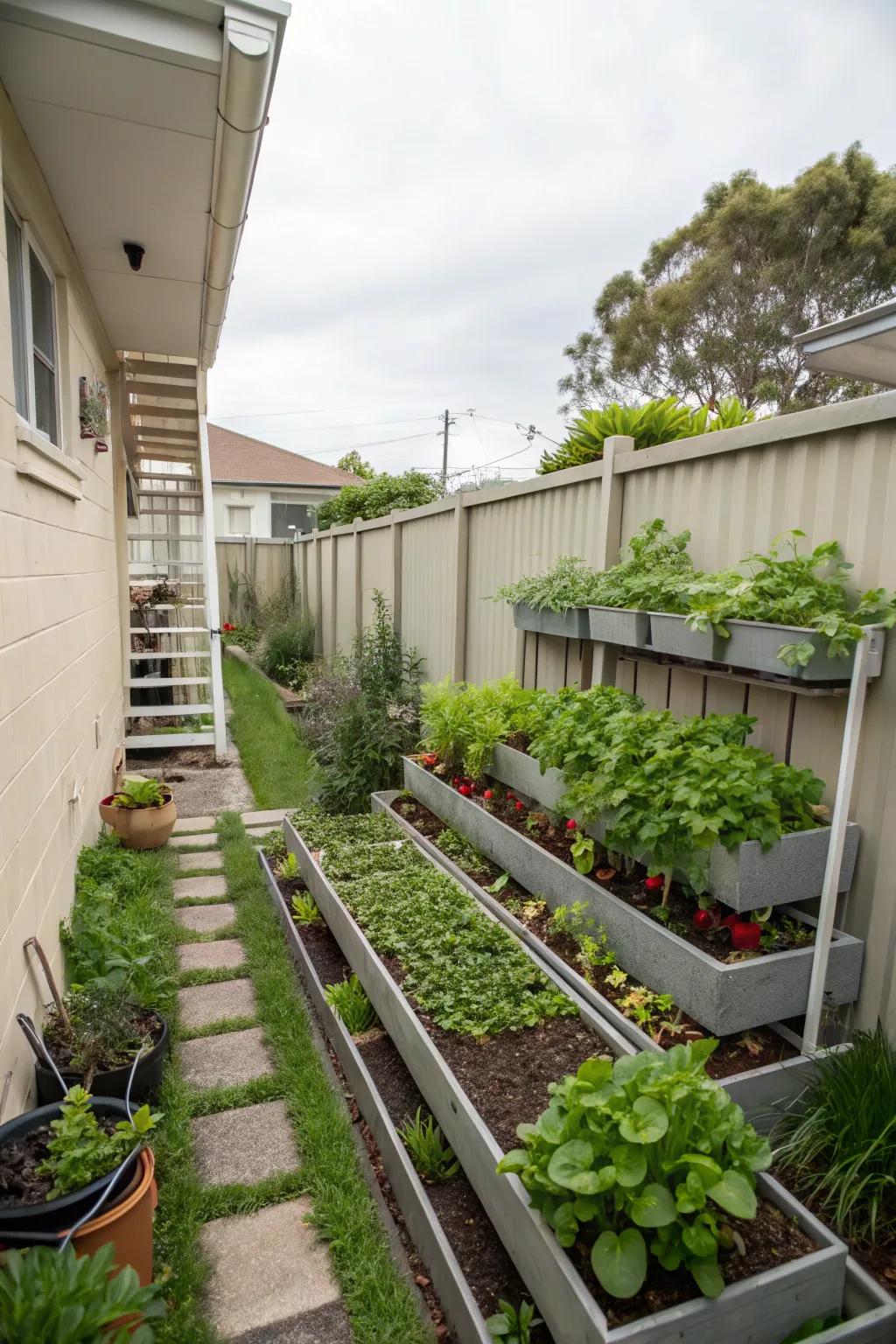
Use tiered gutters for a unique vertical garden option. This unconventional method has been a conversation starter in my garden tours.
These products might be useful:
- Metal Gutter System: Install a durable metal gutter system to create a space-saving vertical garden in your backyard.
- Hanging Planter Brackets: Secure your gutter garden with sturdy hanging planter brackets, ensuring a stable and safe setup.
- Organic Potting Soil: Fill your gutters with high-quality organic potting soil to promote healthy plant growth.
7. Create Raised Beds
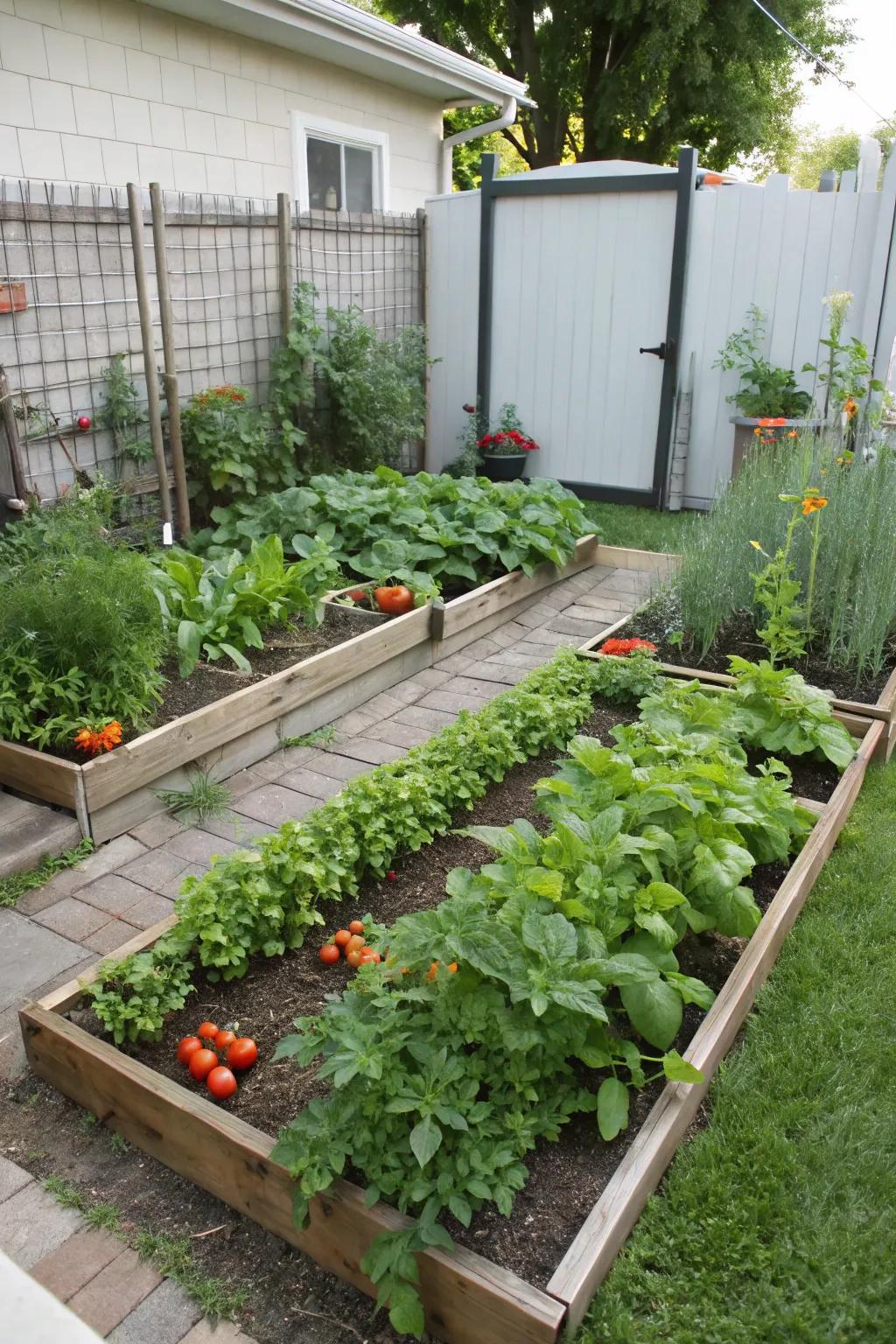
Raised beds are a game-changer for small spaces, offering better soil quality and drainage. I find them perfect for growing root veggies like carrots and beets without taking up much room.
Consider these options:
- Cedar Raised Garden Bed Kit: Elevate your gardening game with a durable cedar raised bed, ideal for compact spaces.
- Vegetable Garden Soil Mix: Enhance your soil quality with this nutrient-rich mix, perfect for thriving root veggies.
- Seed Starter Kit for Vegetables: Kickstart your garden with this versatile kit, ideal for growing carrots and beets efficiently.
8. Plant a Salsa Garden

Grow ingredients like tomatoes, peppers, and cilantro for homemade salsa. It’s a fun way to spice up your gardening and your meals!
A few relevant products:
- Raised Garden Bed Kit: Enhance your salsa garden setup with a durable, easy-to-assemble raised garden bed kit.
- Tomato Plant Support Cages: Support your tomato plants for optimal growth and prevent them from sprawling on the ground.
- Organic Vegetable Fertilizer: Boost your plants’ growth with organic fertilizer designed for thriving vegetable gardens.
9. Try a Salad Garden
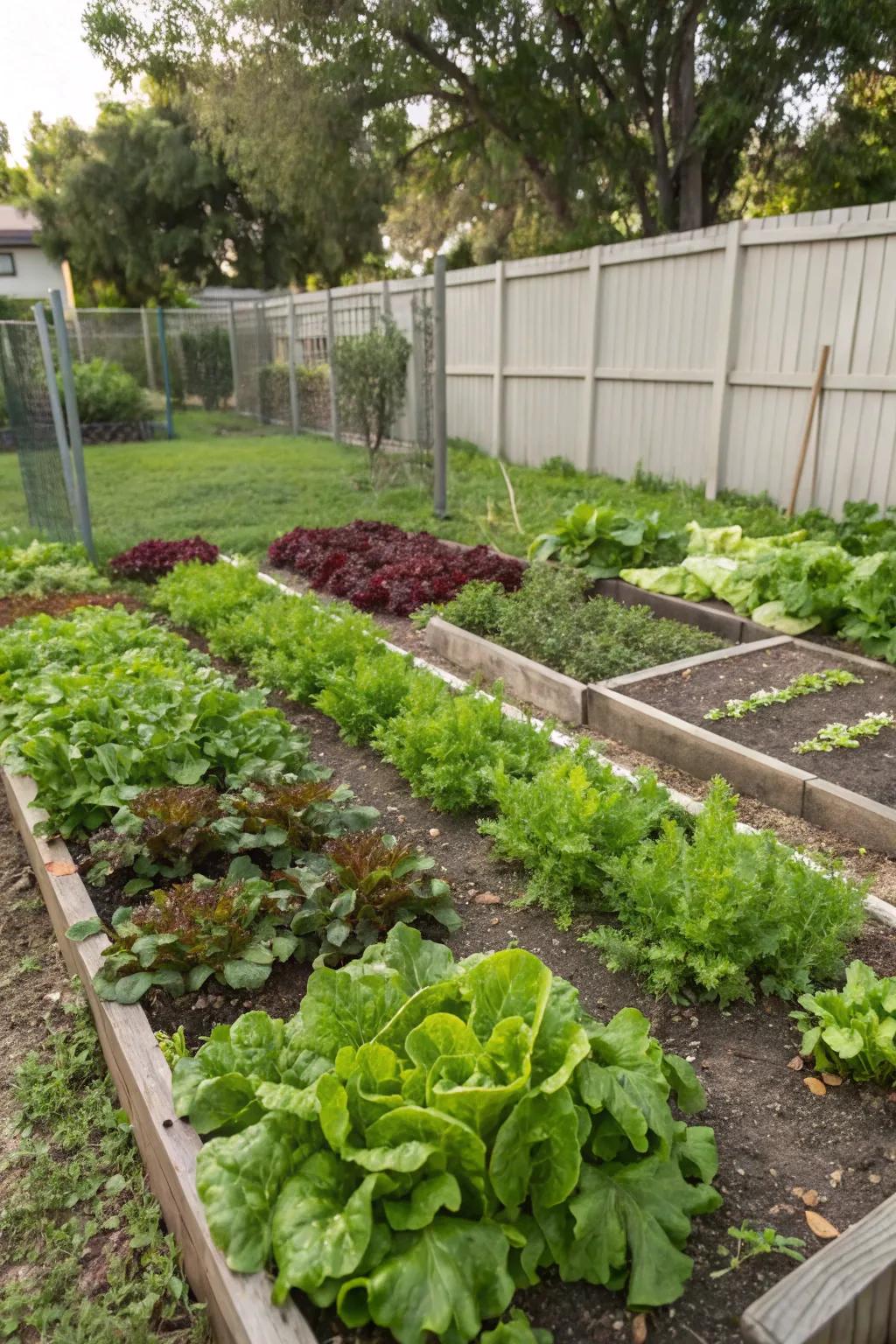
Dedicate a section to fast-growing salad greens like lettuce and spinach. This has been a staple in my garden, ensuring fresh salads are always within reach.
Products that could assist:
- Raised Garden Bed Kit: Optimize your space and grow more salad greens with an easy-to-assemble raised garden bed.
- Organic Salad Green Seeds: Start your salad garden right with a variety of organic lettuce and spinach seeds.
- Drip Irrigation Kit: Ensure consistent watering for your salad greens with a simple drip irrigation system.
10. Utilize Hanging Gardens
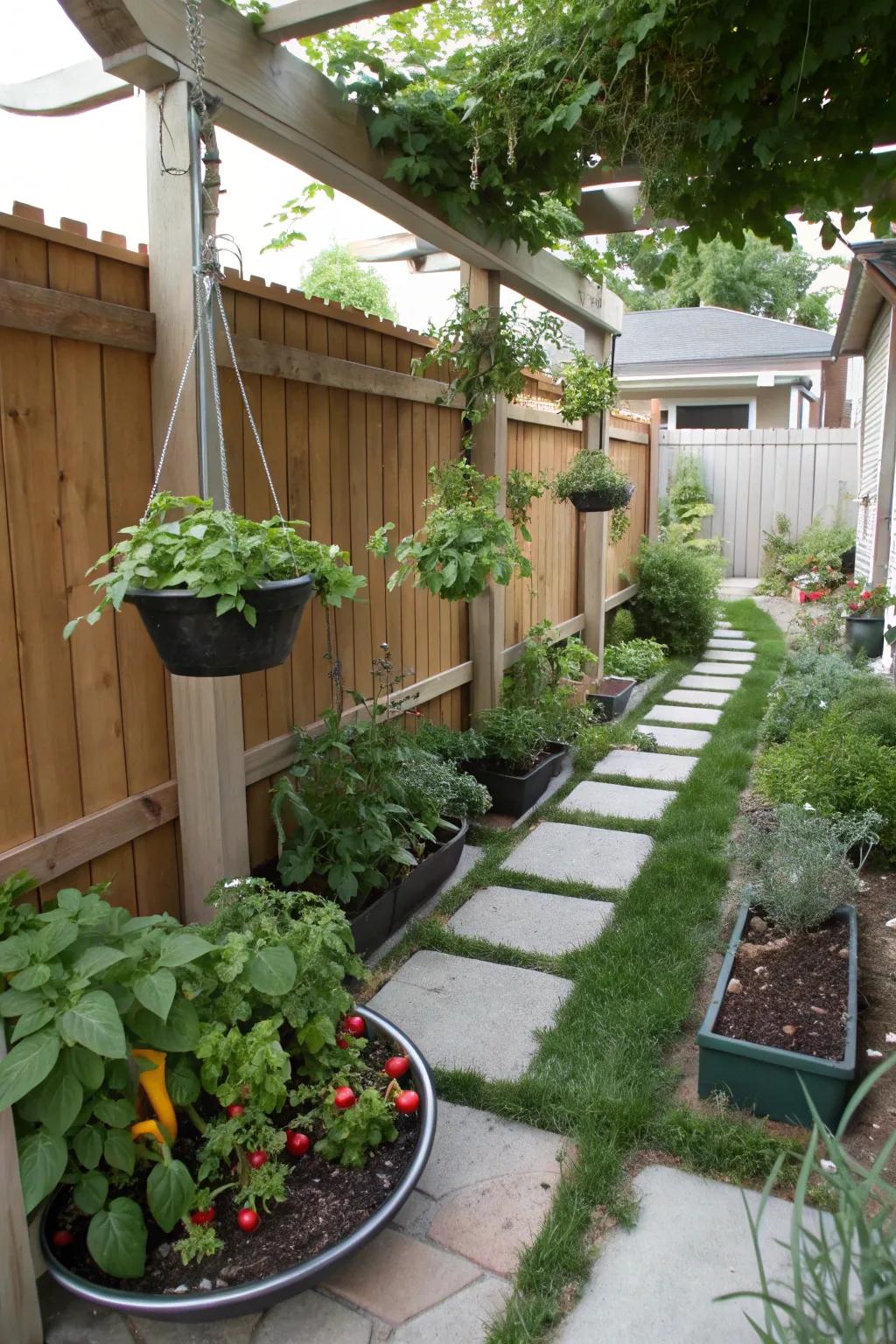
Hang planters from pergolas or porches for easy access and beauty. These hanging gardens save space and add a whimsical touch to my backyard.
A few things you might like:
- Hanging Planter Set: Add charm to your garden with durable hanging planters, ideal for herbs and small vegetables.
- Pergola Hooks for Planters: Secure your hanging gardens effortlessly with these strong, reliable pergola hooks for added convenience.
- Organic Potting Soil: Enhance plant growth in your hanging gardens with high-quality, nutrient-rich organic potting soil.
11. Opt for Container Gardening
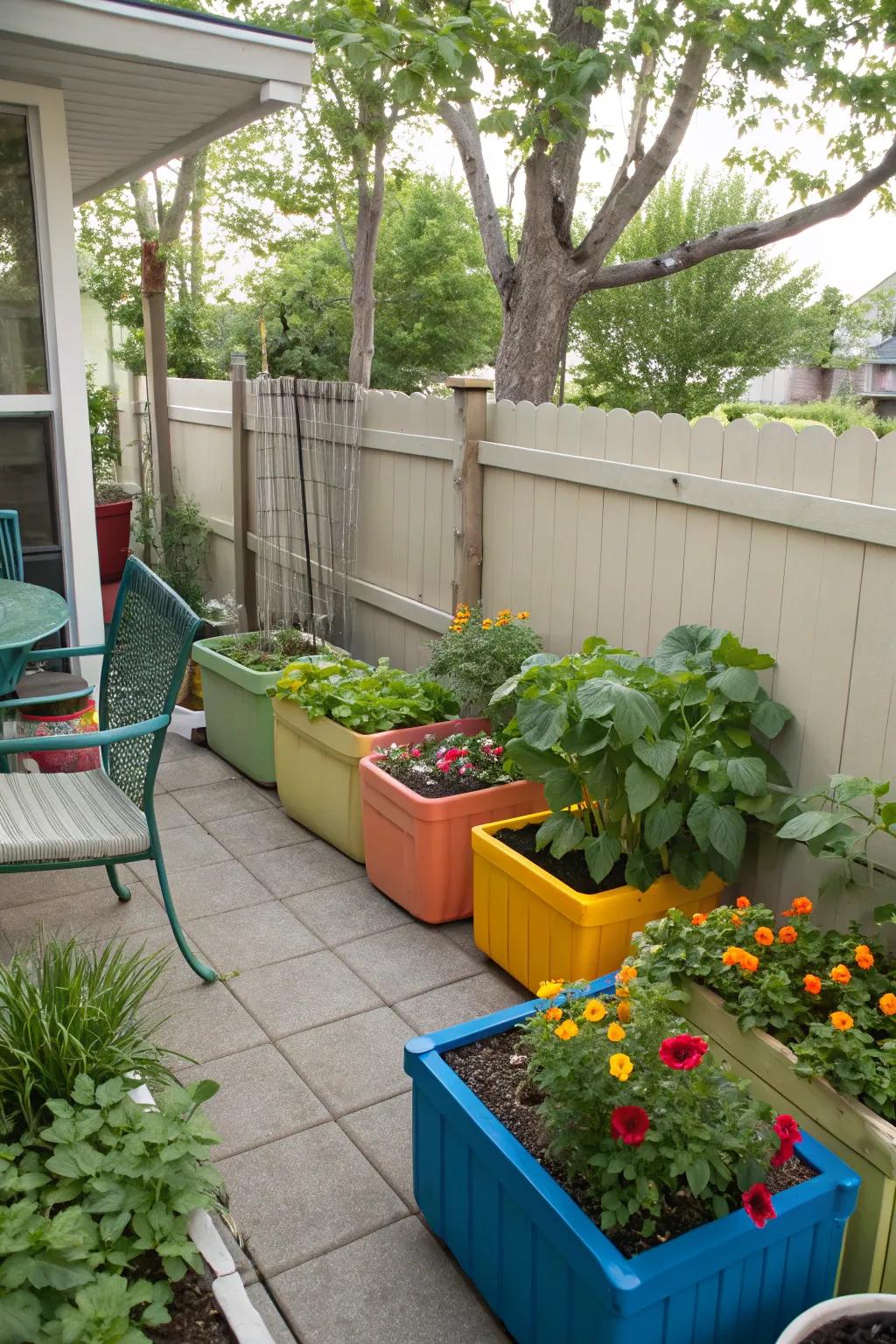
Containers offer flexibility and can be placed anywhere with good sunlight. I love using colorful pots to grow herbs and small veggies, adding both function and flair to my patio.
Possibly helpful picks:
- Colorful Gardening Pots: Brighten up your patio with vibrant pots perfect for growing herbs and small veggies.
- Portable Plant Trolley: Easily move your plants to catch the best sunlight with a sturdy plant trolley.
- Organic Potting Soil: Ensure thriving plants with nutrient-rich soil ideal for container gardening.
12. Interplant Veggies with Flowers
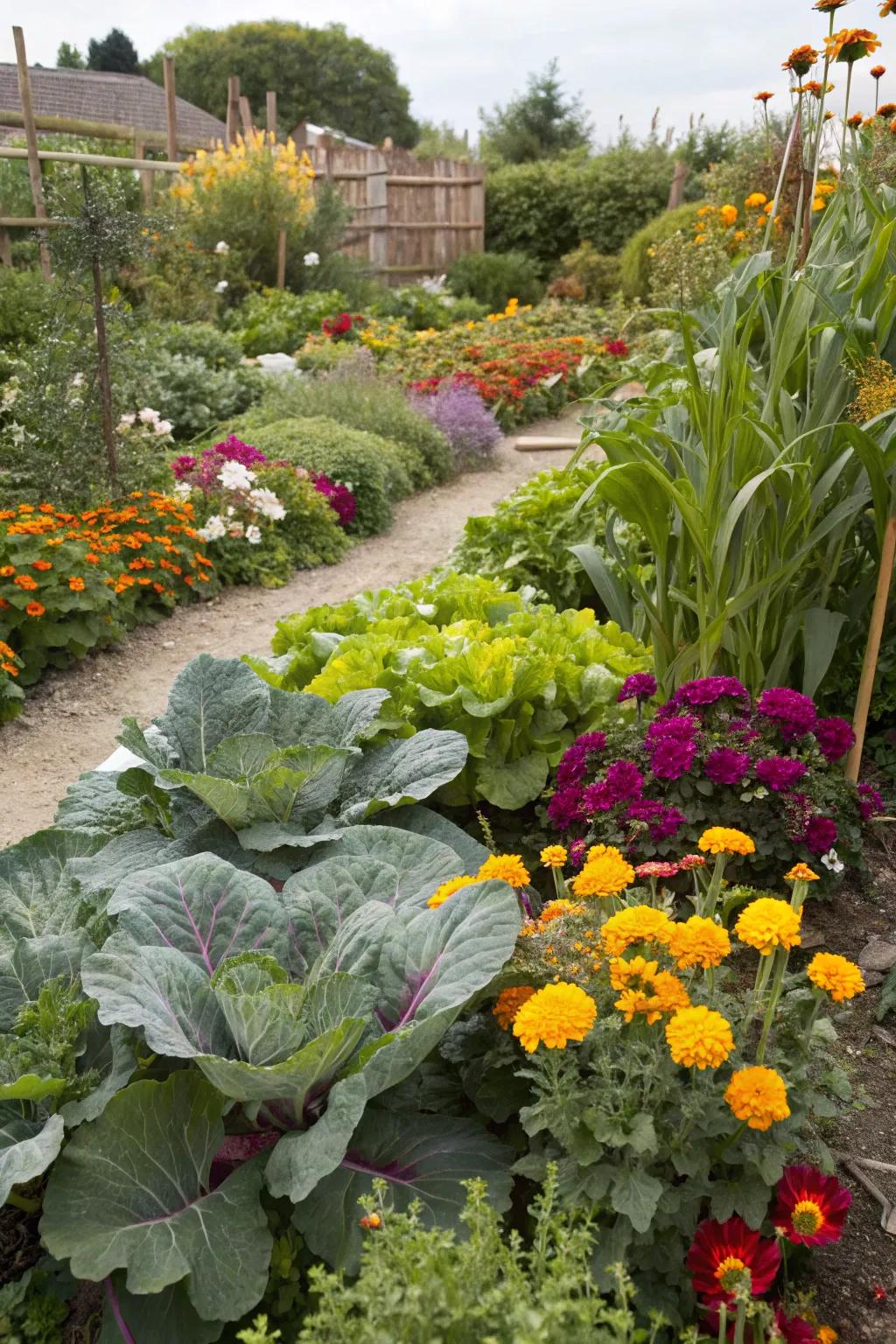
Mix veggies with flowers to attract pollinators and enhance beauty. This method has transformed my garden into a lively, buzzing ecosystem.
Items that may come in handy:
- Pollinator-Friendly Flower Seed Mix: Boost pollination and garden beauty; plant a mix of colorful, pollinator-friendly flowers today.
- Veggie and Flower Interplanting Guide: Discover practical tips for combining veggies and flowers to create a thriving garden ecosystem.
- Colorful Garden Plant Markers: Organize your vibrant garden effortlessly; use durable markers for easy identification and care.
13. Set Up a Keyhole Garden
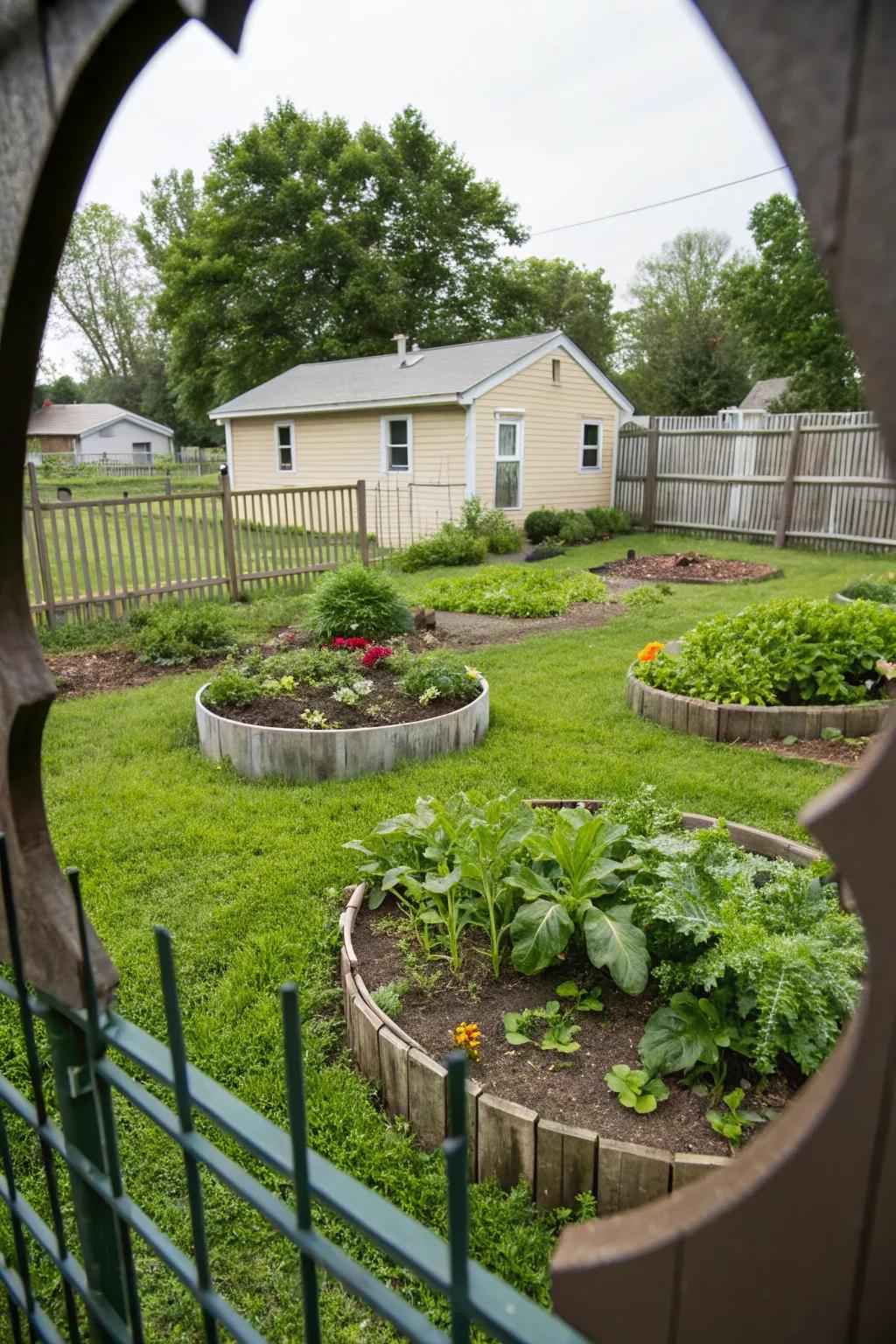
Create a circular garden with a built-in compost bin to enrich your soil. I’ve found this setup super easy to maintain and incredibly productive.
May just do the trick:
- Circular Raised Garden Bed: Transform your backyard with this durable and easy-to-install circular garden bed kit.
- Compost Bin: Enhance soil fertility with a compact, efficient compost bin perfect for your keyhole garden.
- Organic Fertilizer: Boost your garden’s growth with this all-natural organic fertilizer for healthy, vibrant plants.
14. Incorporate Root Vegetables
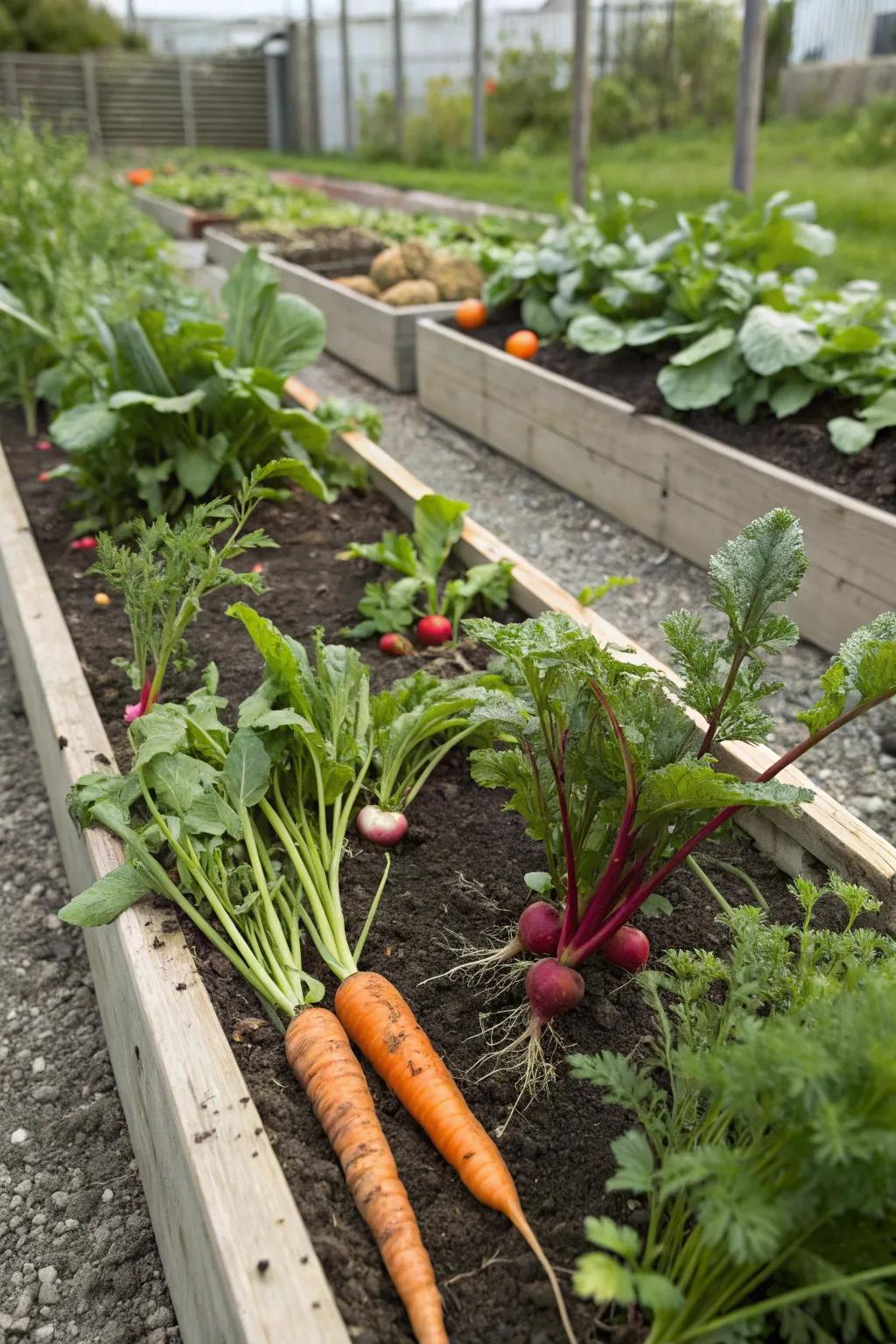
Plant root veggies like radishes and carrots for a fall harvest. In my garden, these have been surprisingly easy to grow and incredibly rewarding.
Some handy options:
- Raised Garden Bed Kit: Create ideal growing conditions for root veggies with this easy-to-assemble raised garden bed kit.
- Organic Root Vegetable Seeds: Start your garden right with organic seeds for carrots, radishes, and more. Grow at home!
- Gardening Hand Tool Set: Equip yourself with essential tools to plant and nurture your root vegetables effortlessly.
15. Implement Square Foot Gardening
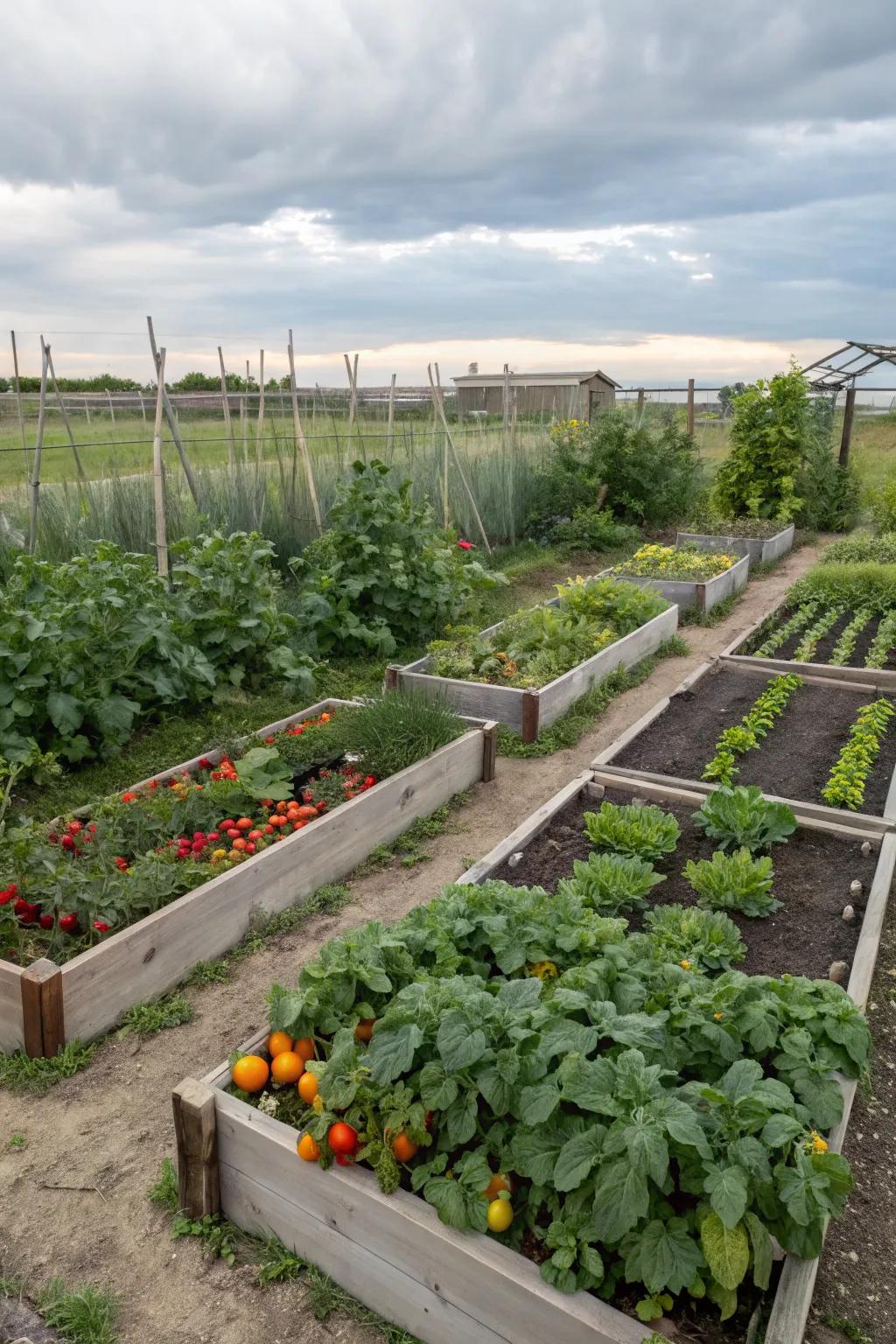
Divide your garden into square foot sections to maximize planting efficiency. This method has helped me organize my garden and ensure every inch is productive.
These products might help:
- Raised Garden Bed Kit: Elevate your garden productivity with an easy-to-assemble raised garden bed kit.
- Square Foot Gardening Grid: Organize your planting space efficiently using a durable square foot gardening grid.
- Organic Vegetable Seeds Pack: Grow healthy vegetables with a diverse pack of organic seeds perfect for your garden.
16. Build a Small Greenhouse

Install a mini greenhouse to extend your growing season. In my garden, it keeps plants cozy and productive during cooler months.
Explore these options:
- Mini Greenhouse Kit: Easily assemble this mini greenhouse to protect your plants and extend their growing season.
- Greenhouse Shelf Unit: Optimize your greenhouse space with sturdy shelves for organized and efficient plant storage.
- Greenhouse Heater: Keep your plants warm with an efficient greenhouse heater during cooler months.
17. Embrace Vertical Gardening
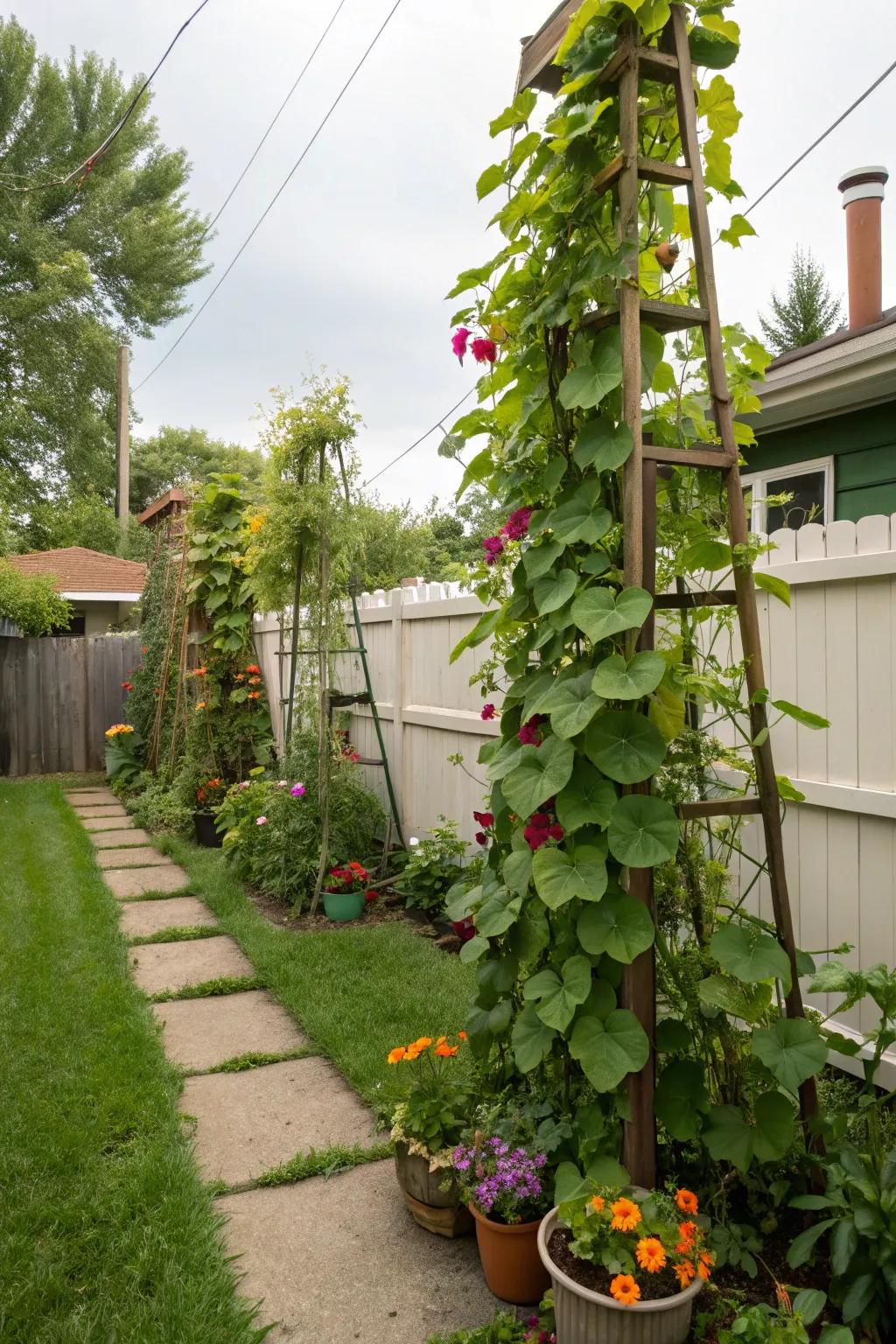
Utilize vertical space by installing trellises for climbing plants like beans and cucumbers. In my garden, vertical structures have doubled my planting space and added a lovely green backdrop.
Check these products out:
- Garden Trellis for Climbing Plants: Maximize your garden’s potential by installing a trellis for beans and cucumbers today!
- Wall-Mounted Vertical Garden Planter: Enhance your garden space with a wall-mounted planter, perfect for herbs and small vegetables.
- Hanging Planter for Vertical Gardening: Create a striking vertical garden feature by adding hanging planters to your backyard walls.
18. Grow Edible Flowers
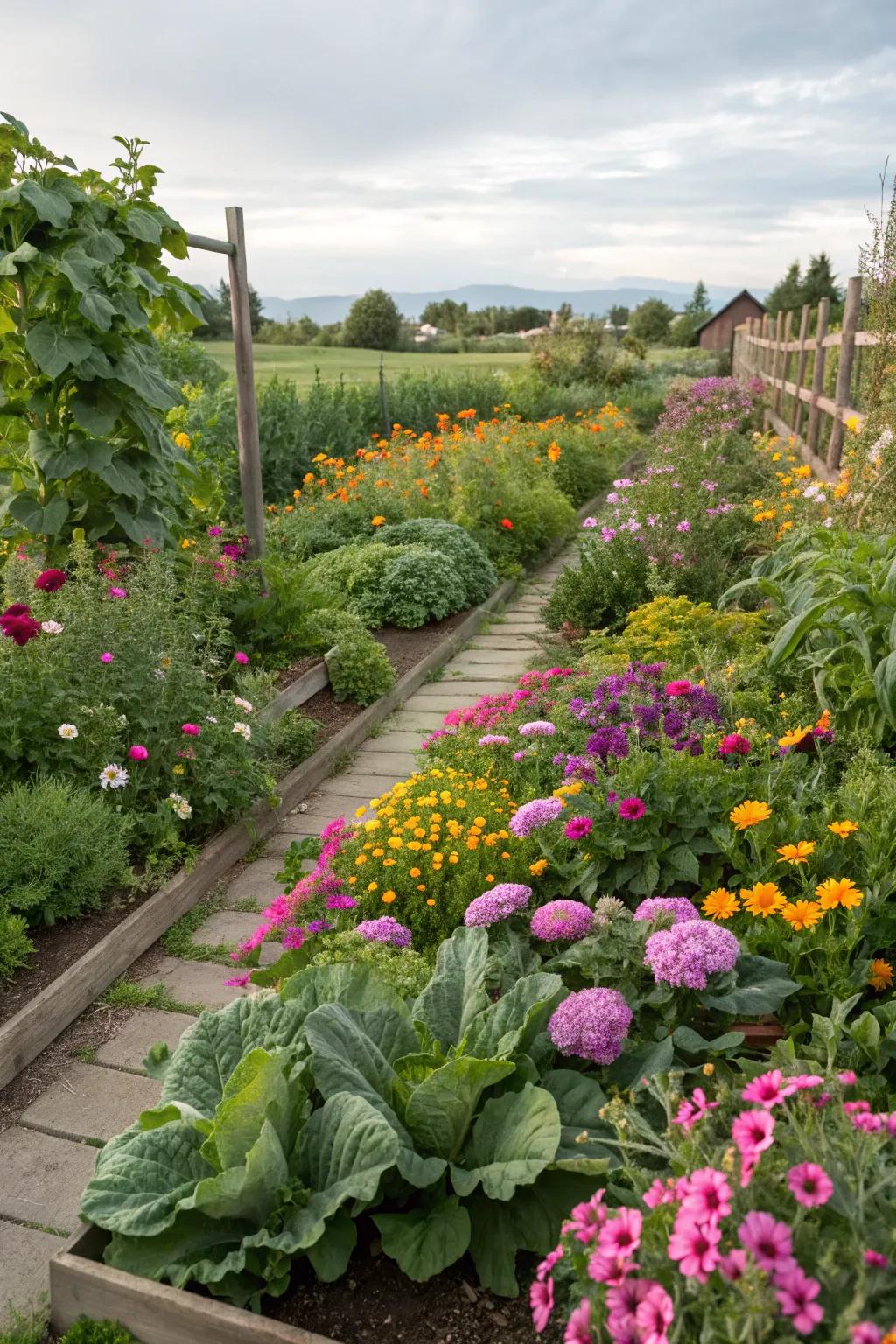
Add a pop of color with edible flowers like nasturtiums and calendula. These not only beautify my garden but also make for delightful garnishes in salads.
Useful items to consider:
- Edible Flower Seed Pack: Start your garden with a vibrant edible flower seed pack and enjoy colorful blossoms.
- Raised Garden Bed Planter: Elevate your edible flower gardening experience with an easy-to-use raised garden bed planter.
- Organic Potting Soil: Enhance your flower growth with rich, organic potting soil for healthier, vibrant blooms.
19. Implement Drought-Resistant Techniques
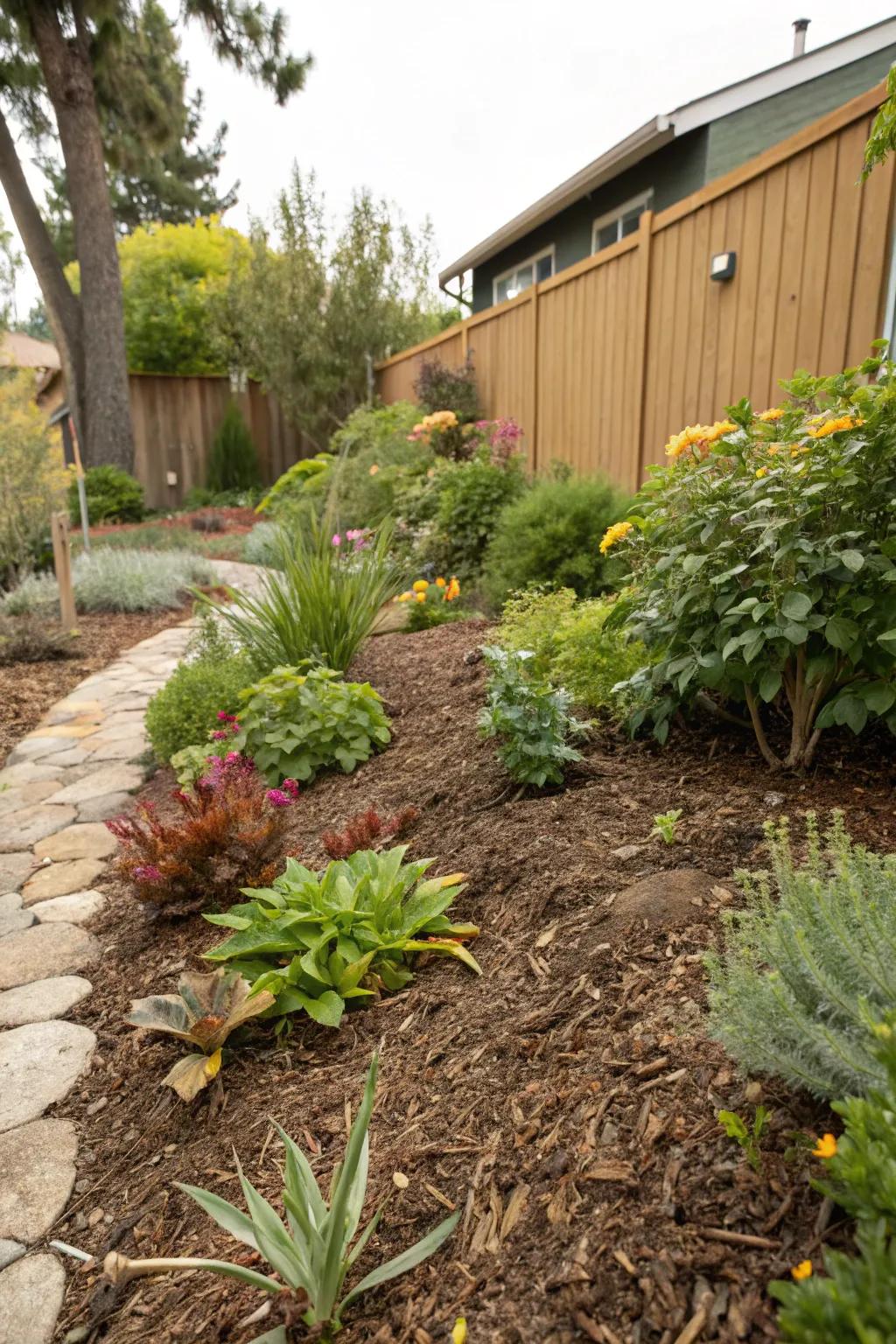
Use mulch and water-efficient plants to thrive in dry conditions. These practices have helped my garden flourish even during hot Texas summers.
Possibly handy products:
- Mulch for Gardens: Enhance moisture retention and suppress weeds with quality mulch in your garden today.
- Drip Irrigation Kit: Install an efficient drip irrigation system to conserve water and nourish plants effectively.
- Drought-Resistant Plant Seeds: Grow resilient plants with these seeds, ensuring a vibrant garden during dry spells.
20. Practice Succession Planting
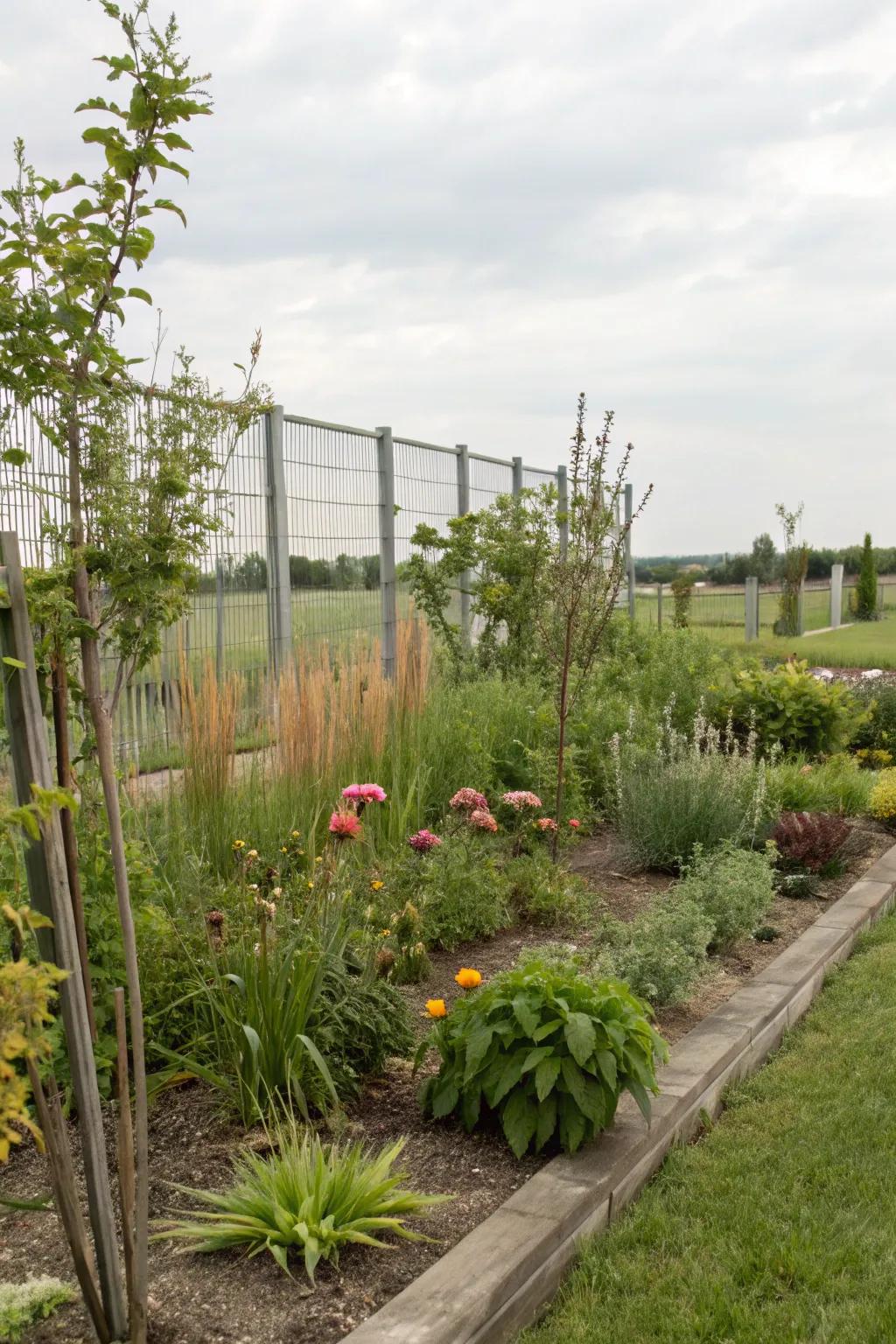
Stagger planting times to ensure continuous harvests. This technique keeps my garden productive and my kitchen stocked year-round.
You might like:
- Vegetable Garden Seed Pack: Enhance your planting schedule with diverse seeds perfect for continuous harvests and variety.
- Garden Planner Journal: Organize your planting times with ease, ensuring a productive garden throughout the seasons.
- Raised Garden Bed Kit: Optimize your space and manage succession planting effectively with an easy-to-install garden bed kit.
